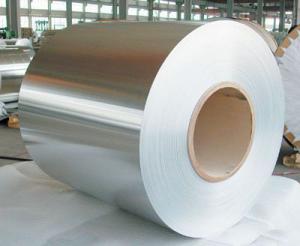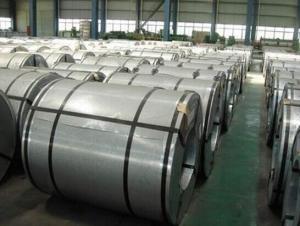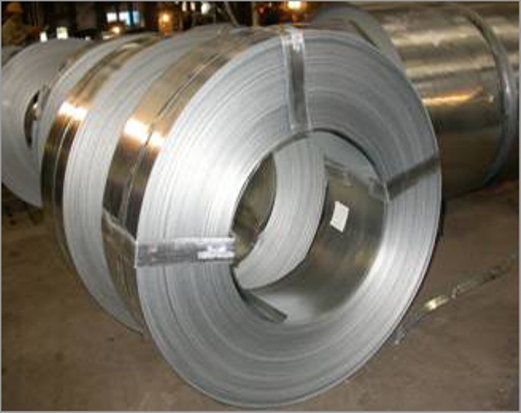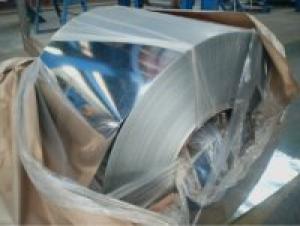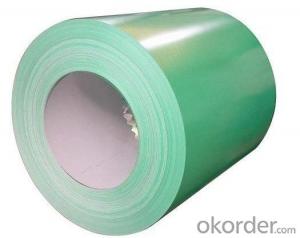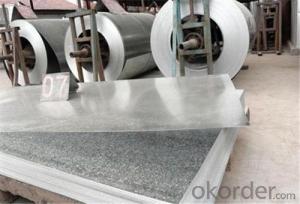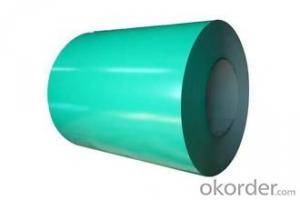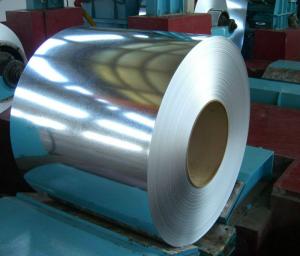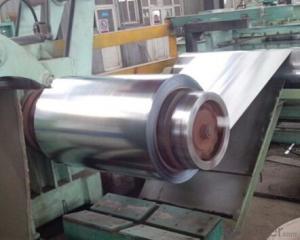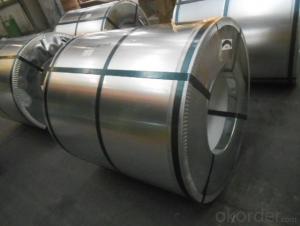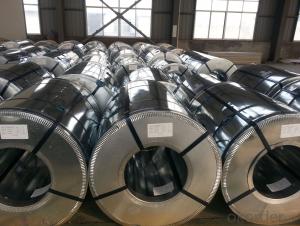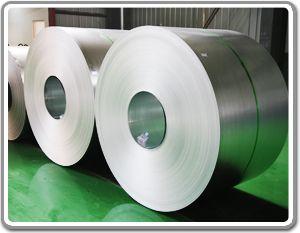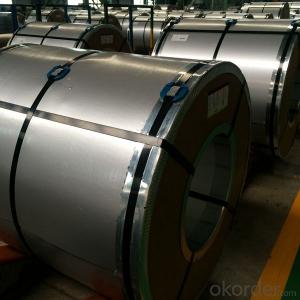Hot Dipped Galvanized Steel Coil GI in China
- Loading Port:
- Qingdao
- Payment Terms:
- TT OR LC
- Min Order Qty:
- 222 m.t.
- Supply Capability:
- 333 m.t./month
OKorder Service Pledge
OKorder Financial Service
You Might Also Like
1.Structure of Hot-Dip Galvanized Steel Sheet Description:
Hot-dip galvanized steel coils are available with a pure zinc coating through the hot-dip galvanizing process. It offers the economy, strength and formability of steel combined with the corrosion resistance of zinc. The hot-dip process is the process by which steel gets coated in layers of zinc to protect against rust. It is especially useful for countless outdoor and industrial applications. Production of cold formed corrugated sheets and profiles for roofing, cladding, decking, tiles, sandwich walls, rainwater protective systems, air conditioning duct as well as electrical appliances and engineering.
2.Main Features of the Hot-Dip Galvanized Steel Sheet:
• Excellent process capability
• Smooth and flat surface
• Workability, durability
• Excellent anticorrosive property
• High strength
• Good formability
• Good visual effect
3.Hot-Dip Galvanized Steel Sheet Images
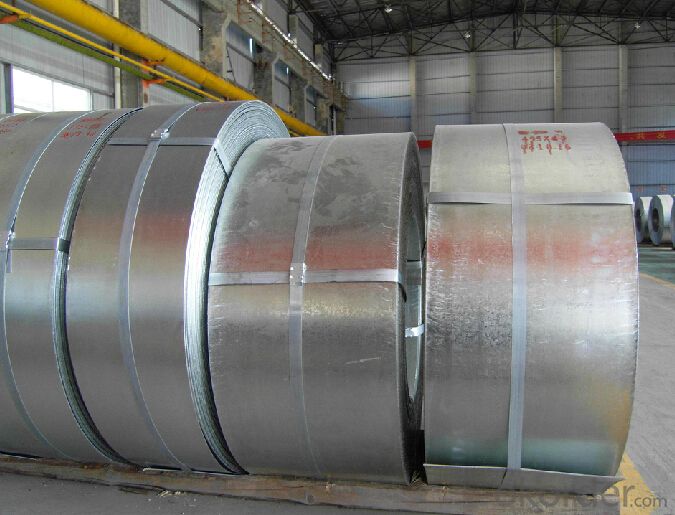
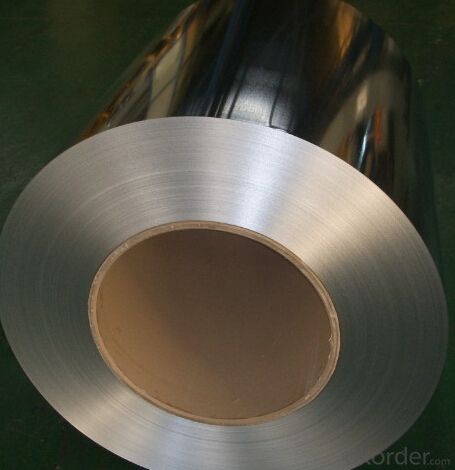
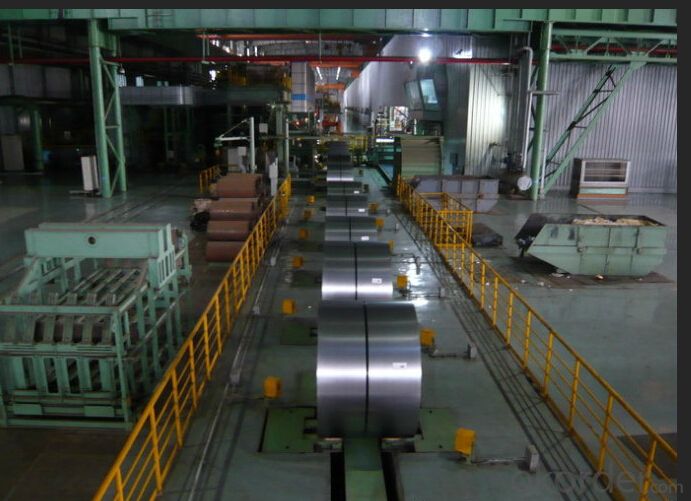
4.Hot-Dip Galvanized Steel Sheet Specification
Standard: ASTM, JIS,EN
Grade: CS, DX51D+Z,SGCC, SS 230~550,S220GD+Z~S550GD+Z, SGC340~SGC570
Thickness: 0.1mm~5mm
Width: max 2000mm
Coil weight:3-12 MT
Coil ID:508/610mm
Surface structure: zero spangle, regular spangle or minimum spangle
Surface treatment: Chromate treatment, Oiled/dry, skinpassed/non-skinpassed
Packing: Standard seaworthy export package
Technology test results:
| Zinc Coating | 60-275g( as required) |
| Thickness Range | 0.14-1.5mm |
| Coil Inner Diameter | 508mm |
| Coil weight | 3-5MT(as required) |
| Surface | Regular/mini/zero spangle, chromated, skin pass, dry etc. |
| Width range | 600-1250mm(900mm, 1215mm, 1250mm, 1000mm the most common) |
| Applications | With excellent cold bending molded manufacturablity, good decoration effect, strong anti-corrosion ability, galvanized steel coils and sheets are also pollution-free and easily recycled. Accordingly, they can be used as final products and basic plates of color coated steel coils and widely applied in construction, home appliances, decoration, ect. |
5.FAQ of Hot-Dip Galvanized Steel Sheet
We have organized several common questions for our clients,may help you sincerely:
1.How about your company?
A world class manufacturer & supplier of castings forging in carbon steel and alloy steel,is one of the large-scale professional investment casting production bases in China,consisting of both casting foundry forging and machining factory. Annually more than 8000 tons Precision casting and forging parts are exported to markets in Europe,America and Japan. OEM casting and forging service available according to customer’s requirements.
2.How to guarantee the quality of the products?
We have established the international advanced quality management system,every link from raw material to final product we have strict quality test;We resolutely put an end to unqualified products flowing into the market. At the same time, we will provide necessary follow-up service assurance.
3. How long can we receive the product after purchase?
Usually within thirty working days after receiving buyer’s advance payment or LC. We will arrange the factory manufacturing as soon as possible. The cargo readiness usually takes 15-30 days, but the shipment will depend on the vessel situation.
- Q: What are the main factors that affect the price of steel coils?
- The main factors that affect the price of steel coils include the cost of raw materials, such as iron ore and scrap metal, as well as the demand and supply dynamics in the market. Other influential factors include energy costs, transportation expenses, production capacity, and geopolitical factors that can impact global trade. Additionally, fluctuations in currency exchange rates and government regulations on trade and tariffs can also influence the price of steel coils.
- Q: How are steel coils used in the manufacturing of aerospace components?
- Steel coils are used in the manufacturing of aerospace components primarily for their strength, durability, and ability to withstand high temperatures. These coils are typically formed into various shapes and sizes to create structural parts like fuselage frames, landing gear components, and engine mounts. The steel coils provide the necessary strength and rigidity to ensure the structural integrity of these aircraft components, making them essential in the aerospace industry.
- Q: How are steel coils used in the production of furniture?
- Steel coils are used in the production of furniture to provide structural support and durability. They are commonly used in the construction of sofas, chairs, and other seating furniture to create a strong and sturdy foundation. The coils are typically incorporated into the furniture's frame or used in the construction of the seat cushions, providing comfort and resilience.
- Q: How are steel coils used in the production of steel cables?
- Steel coils are used in the production of steel cables as they serve as the raw material for cable manufacturing. The steel coils are unwound and then processed through a series of steps, such as drawing, stranding, and coating, to transform them into steel cables of various sizes and strengths. These cables are widely used in industries like construction, transportation, and telecommunications for purposes such as supporting structures, lifting heavy objects, and transmitting electrical signals.
- Q: What are the different methods of coil slitting for steel coils?
- There exists a variety of techniques for coil slitting steel coils, each serving a specific purpose and employed in various industries. Here are several commonly used methods: 1. The most widely employed technique for coil slitting is rotary shear slitting. It entails the utilization of rotating knives to divide the steel coil into smaller strips. Renowned for its speed and precision, rotary shear slitting is ideal for large-scale production. 2. Loop slitting involves feeding the steel coil through a loop control system that maintains constant tension. Subsequently, a rotating knife is used to cut the coil into strips. Loop slitting is often utilized for thinner gauge materials due to its ability to produce clean, burr-free edges. 3. Oscillating shear slitting employs oscillating knives to cut the steel coil. These knives move back and forth rapidly, creating a shearing effect that facilitates cutting through the coil. This technique is commonly used for thicker gauge materials and can handle higher tensile strengths. 4. Crush cut slitting involves pressing a circular blade against the steel coil to cut it. The blade crushes the material, resulting in a cut. This method is frequently used for softer materials or when edge quality is not of utmost importance. 5. Slit edge rolling is a technique that involves rolling the edges of the steel coil after it has been slit. This process smooths out the edges and enhances the appearance of the strips. Slit edge rolling is often employed in applications that require a high-quality finish. 6. Laser slitting is a relatively new method that utilizes a laser beam to cut through the steel coil. This technique offers precision and can handle a wide range of thicknesses. Laser slitting is commonly used in high-precision applications where edge quality is crucial. These represent just a few of the various coil slitting methods for steel coils. The selection of a method depends on factors such as material thickness and tensile strength, desired edge quality, and the intended application of the slit strips.
- Q: What are the common coil sizes available for steel coils?
- The steel coil sizes available for different industries and applications vary. However, there are standard sizes commonly used across sectors. These sizes include coil widths of 36 inches, 48 inches, 60 inches, and 72 inches. In terms of coil diameter, the most common sizes range from 20 inches to 24 inches. Furthermore, coil weights can vary greatly depending on the type of steel and its intended use, ranging from a few thousand pounds to tens of thousands of pounds. It is important to note that these sizes can differ among steel manufacturers, so it is advisable to consult the specific supplier or industry standards to determine the available coil sizes for a particular steel product.
- Q: Perform three sets of 15 repetitions several times a week and you will soon have buns of steel.
- That particular exercise will develop the buttock muscles, or the gluteous maximus. In other words, your butt, sometimes referred to as buns, along with many other euphemisms.
- Q: What are the common coil surface treatments available for steel coils?
- Steel coils can be treated with various methods to improve their durability, resistance to corrosion, and appearance. These treatments serve different purposes and offer different benefits. 1. Galvanized Coating: A layer of zinc is applied to the surface of the steel coil, providing excellent protection against corrosion. This coating is commonly used in outdoor applications or high humidity environments to prevent rust and increase the coil's lifespan. 2. Phosphating: A chemical treatment that creates a thin layer of phosphate coating on the steel coil's surface. This treatment improves the adhesion of subsequent coatings and enhances the coil's paintability. It also offers some corrosion resistance and can be used as a pre-treatment before painting or powder coating. 3. Chromate Conversion Coating: Also known as chem film or Alodine, this treatment involves applying a thin layer of chromate to the steel coil's surface. It provides corrosion protection and acts as a primer for other coatings, improving their adhesion. It is commonly used in aerospace and electrical applications. 4. Powder Coating: In this dry finishing process, a fine powder is electrostatically applied to the steel coil's surface and then cured under heat. The result is a durable and attractive finish that offers excellent resistance to chipping, scratching, and fading. Powder coating is available in a wide range of colors and textures, making it a versatile option. 5. Organic Coatings: Liquid paints such as acrylic, polyester, or polyurethane are applied to the steel coil's surface. These coatings provide aesthetic appeal, protection against corrosion, and resistance to weathering and UV radiation. They are commonly used in architectural and automotive applications. 6. Anodizing: Primarily used for aluminum coils, anodizing can also be applied to steel coils. This treatment involves creating an oxide layer on the coil's surface through an electrochemical process. It enhances corrosion resistance and provides an attractive finish. Anodizing is commonly used in architectural and decorative applications. It's important to consider specific requirements, including performance, aesthetics, and environmental factors, when choosing a coil surface treatment. Consulting with a professional in the steel industry can help determine the most suitable treatment for a particular project.
- Q: What are the common applications of hot-rolled steel coils?
- Hot-rolled steel coils are commonly used in various applications such as construction, automotive manufacturing, pipe and tube manufacturing, shipbuilding, and general engineering purposes. They are particularly suitable for projects that require strong and durable materials, as well as those that involve shaping and forming processes.
- Q: What are the common coil coating materials?
- The common coil coating materials include polyester, polyvinylidene fluoride (PVDF), polyurethane, epoxy, and acrylic.
Send your message to us
Hot Dipped Galvanized Steel Coil GI in China
- Loading Port:
- Qingdao
- Payment Terms:
- TT OR LC
- Min Order Qty:
- 222 m.t.
- Supply Capability:
- 333 m.t./month
OKorder Service Pledge
OKorder Financial Service
Similar products
Hot products
Hot Searches
Related keywords
